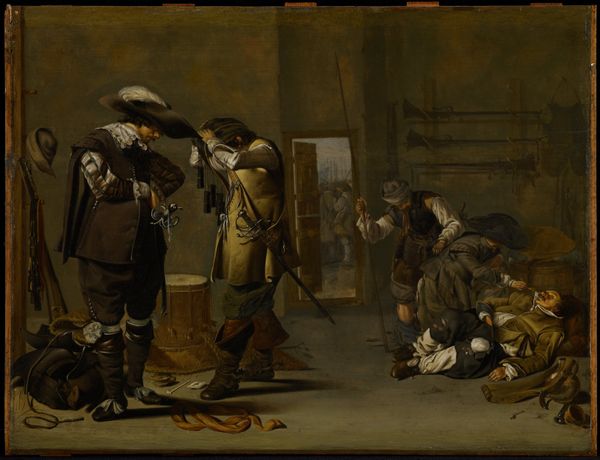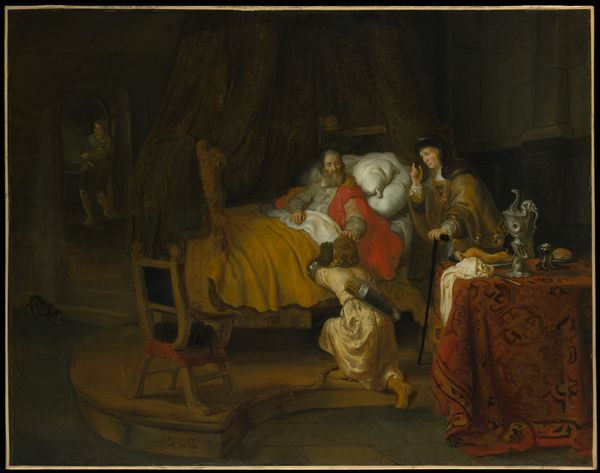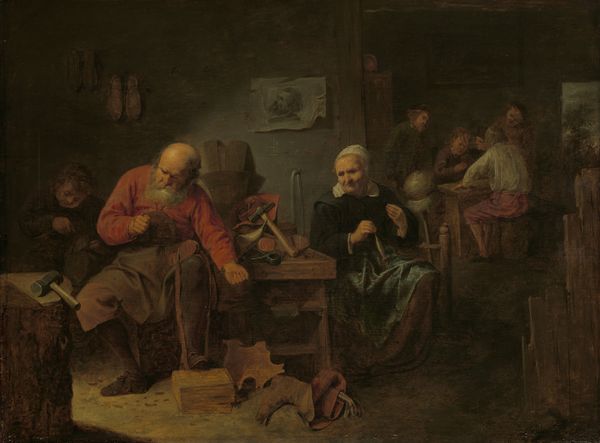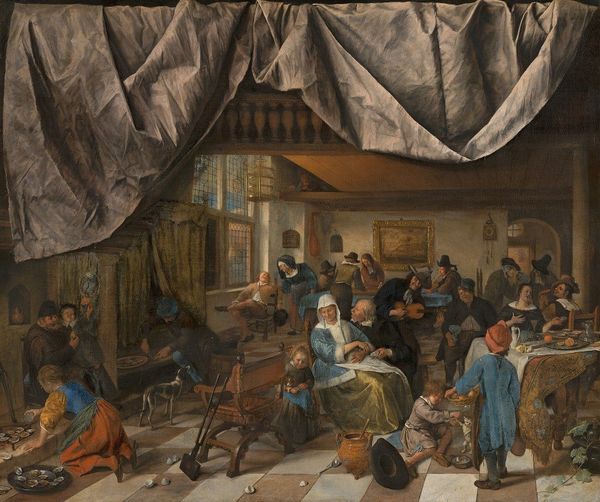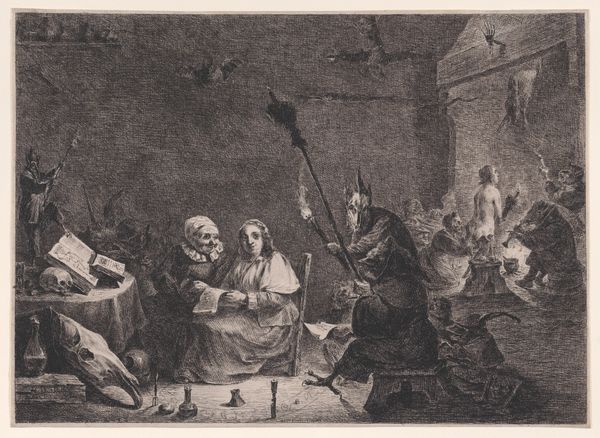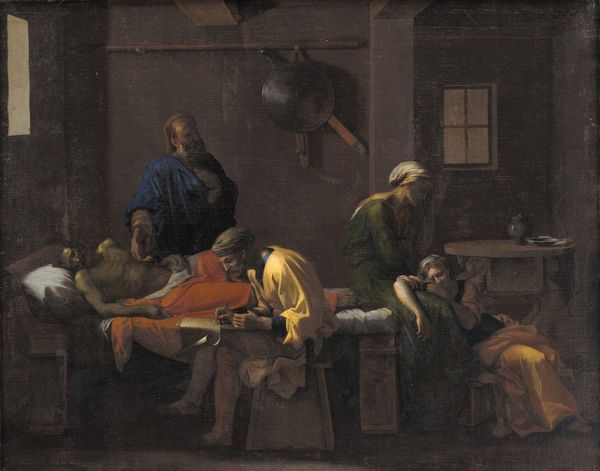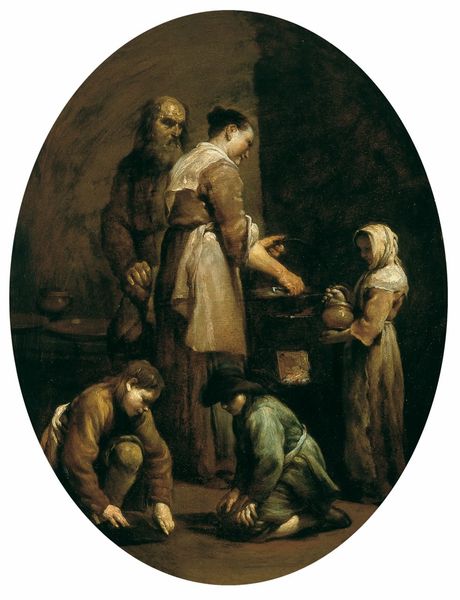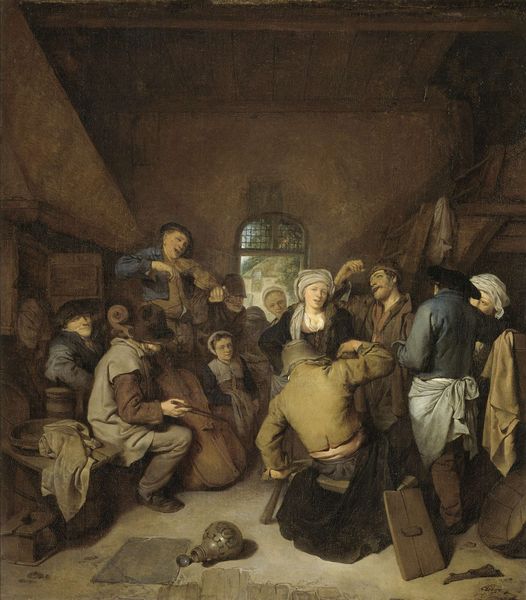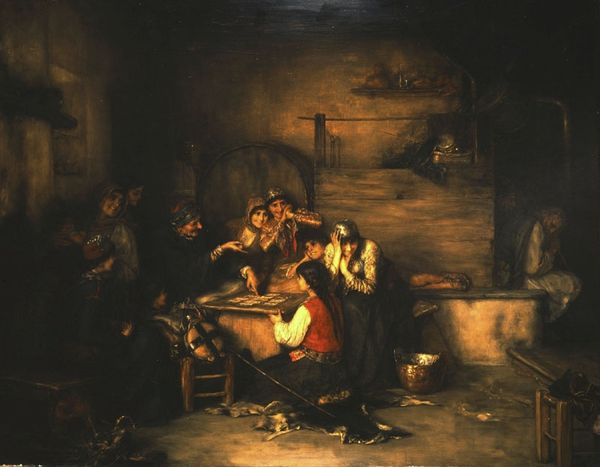
oil-paint
#
portrait
#
baroque
#
oil-paint
#
genre-painting
Dimensions: 20 1/8 x 28 3/8 in. (51.1 x 72.1 cm)
Copyright: Public Domain
Curator: This oil on canvas painting by Alessandro Magnasco is entitled "Nuns at Work", and it dates to the early 18th century, sometime between 1700 and 1749. Editor: The palette is rather subdued; it's as though we're peeking into a space where only a muted existence is permitted. The figures, these women, are so absorbed in the labor at hand, almost resigned, as though trapped inside amber. Curator: Magnasco's paintings are often marked by his distinct handling of light and shadow and his focus on scenes from everyday life, or what’s considered 'genre painting.' Here, he illustrates an interior of a convent with nuns engaged in various domestic activities. It's worth considering that in the social and institutional landscape of the Baroque period, the convent was often one of the only options for women outside of marriage. Editor: Exactly. So, it presents such a poignant commentary. The act of crafting, seemingly benign, speaks volumes about the limited autonomy afforded to women of faith, trapped within rigid, patriarchal structures. It prompts a critical look at gendered labor and the subtle ways in which it perpetuated inequalities. I cannot help but wonder what narratives are veiled by these austere portrayals? Curator: Art history reveals that the economic roles that convents played are vital. Needlework, weaving, and embroidery were central not only to self-sufficiency but also as sources of income through sales, marking their significance within the economic framework. The church wasn't just about piety; it was enmeshed with daily survival. Editor: That contextual background shifts my perspective and adds new depth. Perhaps what appeared like resignation may symbolize women working cooperatively as economic players who are actively involved and sustaining not only themselves, but perhaps others outside of those walls. Magnasco's piece, it turns out, reveals not solely the austerity but maybe subtly empowers his subjects through shared effort. Curator: Understanding artwork this way certainly bridges past interpretations to present perceptions. Magnasco's piece may now invite an ongoing exploration, even debate, about societal power structures, female agency, and work during that period. Editor: Agreed; this art doesn’t just sit quietly—it encourages discourse and reframes our viewpoint.
Comments
No comments
Be the first to comment and join the conversation on the ultimate creative platform.
